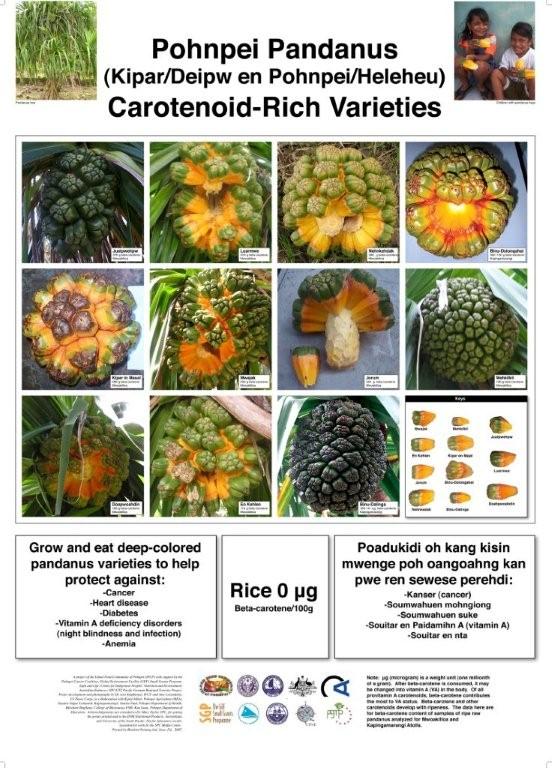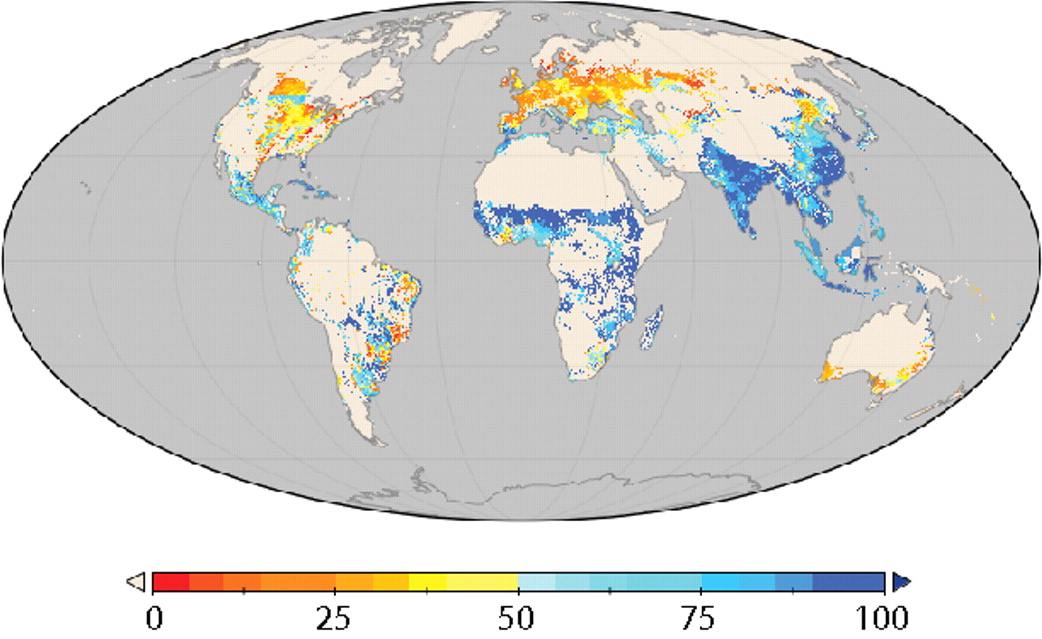Keepers of Genes, a 28-minute documentary produced by award-winning filmmaker Moving Images, documents the role played by pastoralists in preserving animal biodiversity and the key issues confronting them today.
Anyone seen it? Anyone know more?
Agrobiodiversity is crops, livestock, foodways, microbes, pollinators, wild relatives …
Keepers of Genes, a 28-minute documentary produced by award-winning filmmaker Moving Images, documents the role played by pastoralists in preserving animal biodiversity and the key issues confronting them today.
Anyone seen it? Anyone know more?
Dr Lois Englberger of the NGO Island Food Community of Pohnpei, Federated States of Micronesia has just announced the release of a colorful new local food poster entitled “Pohnpei Pandanus: Carotenoid-rich Varieties.”Â

Photographs and nutrient content of nine varieties of pandanus from Mwoakilloa Atoll and two varieties from Kapingamarangi Atoll are presented, along with the message that these carotenoid-rich foods can help protect against cancer, heart disease, diabetes, vitamin A deficiency and anemia or weak blood.Â
The development of the poster started in 2003 with the collection of samples and arranging for analysis for provitamin A and other carotenoids, including beta-carotene, the most important of the provitamin A carotenoids. Note that rice contains no carotenoids.
We hope that this poster may help to promote this neglected food crop, to raise awareness about the distinct varieties of pandanus and to increase understanding about the important health benefits that may be obtained by consuming this fruit.
Warm thanks are extended to the Pohnpei Cancer Coalition, Global Environmental Facility Small Grant Program, Sight and Life, Center for Indigenous Peoples’ Nutrition and Environment, Australian Embassy, SPC GTZ Pacific German Regional Forestry Program, Pohnpei Agriculture, Pohnpei Departments of Health and Education, and the College of Micronesia-FSM for funding and other support, to the Secretariat of the Pacific Community in Suva, Fiji, for assistance in getting the poster developed, printed and laminated, and to all those assisting in this project.
Maybe ours was the straw that broke the camel’s back, but beekeeper Felicia Gilljam has now blogged her thoughts on Colony Collapse Disorder. Being scientifically cautious, I suspect, there’s a disclaimer: “Because I’m a beekeeper, apparently my opinion is considered ‘expert’.” More expert than many another commenter, I reckon. I’ll let you read it over there, but the executive summary is that Felicia is not sure how real the phenomenon is, especially in Europe. And perhaps the virus that has been associated with CCD gets a purchase because something else weakens the hive. She also raises the intriguing possibility that breeding bees to be better harvesters that are docile and don’t swarm may have brought along some other effects — like a weaker immune system — as hitchhikers.
You may remember Typhoon Xangsane, which hit the Philippines in deadly fashion just over a year ago, on 28 September 2006. It was given the Tagalog name Milenyo, or Millennium.
What you may not know is that one of the victims of Milenyo was the national genebank of the Philippines — the National Plant Genetic Resources Laboratory — which is housed by the Institute of Plant Breeding in Los Baños. 1
Some of the results of the typhoon can be seen in the photo essay published by GRAIN not long after the event. Some 70% of the national collection was declared lost and the rest taken next door to IRRI for emergency storage under “black box” conditions.
I visited the genebank last Friday, and the recovery has definitely made some progress, including as a result of some timely financial assistance by the Global Crop Diversity Trust. But there’s still some way to go: much of the collection is still at IRRI for safe keeping.
In this picture, Nestor, who works at the genebank, shows how high the water got on that fateful day. You can also see, closer to the ground, the mark left by the mud which flowed through the building.
Continue reading “A shattered genebank slowly comes back to life”
 Our cartography nut is otherwise engaged, temporarily, but I know he’d love this one. Blue shows agricultural production consumed directly by people: food. Orange-red is consumed indirectly in processed products, mostly feed for livestock but also things like cotton and coffee. Notice anything interesting about the distribution? Yeah, me too.
Our cartography nut is otherwise engaged, temporarily, but I know he’d love this one. Blue shows agricultural production consumed directly by people: food. Orange-red is consumed indirectly in processed products, mostly feed for livestock but also things like cotton and coffee. Notice anything interesting about the distribution? Yeah, me too.
Hat tip to Resilience Science, which gives links to the original study.